TALKERS Legal Series on Fair Use (Part 4): The Amount and Substantiality Factor
By Matthew B. Harrison
TALKERS, VP/Associate Publisher
Harrison Media Law, Senior Partner
Goodphone Communications, Executive Producer
 With the growing popularity of talk media programs utilizing segments of other shows as key elements of scrutiny and commentary in their programming (“Clip Jockey Format” as coined by Michael Harrison), it is important that media content creators be aware of the subtle and often ambiguous rules applying to the legal aspects of this practice under the heading of fair use.
With the growing popularity of talk media programs utilizing segments of other shows as key elements of scrutiny and commentary in their programming (“Clip Jockey Format” as coined by Michael Harrison), it is important that media content creators be aware of the subtle and often ambiguous rules applying to the legal aspects of this practice under the heading of fair use.
This is the fourth installment of a multi-part TALKERS Legal Series on Fair Use for the Media Creator. The first installment is here. The second installment is here. The third installment is here.
The “amount and substantiality” factor in fair use focuses on how much of the copyrighted material is used and whether that portion is essential to the original work. Despite seeming obvious, this factor can be nuanced, and determining how much use is fair can be challenging because it’s not just about the quantity but also about the significance of the portion used.
Is It Difficult to Distinguish?
In many cases, it’s not always obvious what qualifies as a “small” or “insignificant” portion. Courts often consider both the quantity, and the quality of the material used:
• Quantity: This factor asks if only a small part of the work has been used. Using a shorter clip from a video or a few sentences from a book could be more justifiable as fair use. But what qualifies as “small” can vary depending on the work—10 seconds from a short film may be seen differently from 10 seconds in a longer documentary.
• Quality: Even if a creator only uses a small part of the original work, using its “heart” or most memorable part might still count as substantial. For example, a few lines from a song’s chorus, though short, could be considered significant enough to impact fair use status.
Example Cases Highlighting Amount and Substantiality
To better understand this, it’s useful to look at cases that illustrate when the amount used was deemed fair or not:
• Harper & Row v. Nation Enterprises (1985): This case involved a magazine that used a few hundred words from an unpublished memoir by President Gerald Ford. Although this was a small percentage of the memoir, the excerpt contained key insights into Ford’s decision to pardon Nixon. The court held that this use was not fair because it included the most “substantial” and critical part of the memoir, even though the total percentage of text used was minimal.
• Campbell v. Acuff-Rose Music, Inc. (1994): Here, the hip-hop group 2 Live Crew used portions of Roy Orbison’s song “Oh, Pretty Woman” to create a parody. Even though the song’s recognizable parts were used, the new work was transformative in its purpose (a parody rather than a love song). Because the group’s use was a small part relative to the song’s total content and had a new purpose, the court found it was fair use.
Many books and law school classes have been devoted to this question – so let’s focus on Application in Media and Broadcasting
In radio and broadcasting, this factor is often relevant when using clips, songs, or interview segments from other sources. Using a small clip to support commentary or criticism is more likely to be considered fair use, especially if it does not contain the “heart” of the original work:
• Commentary on a Speech: If a talk show uses a brief part of a public figure’s speech to critique it, the fair use factor may weigh in favor of the radio station if it doesn’t take the most memorable segment.
• Use of Music in Shows: Music clips used for thematic transitions or commentary must be kept brief, as lengthy or highly recognizable parts can affect fair use status. Playing just a few bars might qualify, but a chorus or instrumental hook would likely cross the line. This is less of a mine field in traditional broadcast radio as existing license agreements, such as with ASCAP or BMI, may allow for such uses anyway. However, when focusing on the internet – it’s a completely different matter as no licenses have been formally given, yet there is an incentive for the copyright holder to have their work shared. It’s not cut and dry – which is why the following takeaways should be helpful when navigating forward.
Key Takeaways for Media Creators
• Use Minimal Amounts: The less you use, the more defensible your case for fair use, especially if you avoid the most recognizable parts.
• Avoid the “Heart” of the Work: Select portions that serve your purpose without including critical or memorable parts of the original material.
• Transformative Purpose Matters: If the use adds new meaning or serves a different function (e.g., satire, critique), it’s more likely to be deemed fair, even if it includes some key elements.
Summary
Understanding how much of the work a media creator can use while staying within fair use guidelines can be tricky, as this factor requires balancing quantity and significance. Media creators should focus on minimal use that contributes meaningfully to commentary, criticism, or other transformative purposes.
Media attorney, Matthew B. Harrison is VP/associate publisher, TALKERS; Senior Partner, Harrison Media Law; and executive producer, Goodphone Communications. He is available for private consultation and media industry contract representation. He can be reached by phone at 724-484-3529 or email at matthew@harrisonmedialaw.com



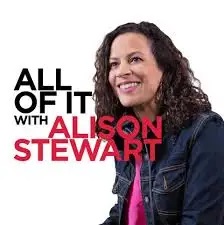 One day last winter, Alison Stewart, the host of “All of It” on public station WNYC, New York was alarmed to find herself speaking gibberish.
One day last winter, Alison Stewart, the host of “All of It” on public station WNYC, New York was alarmed to find herself speaking gibberish. 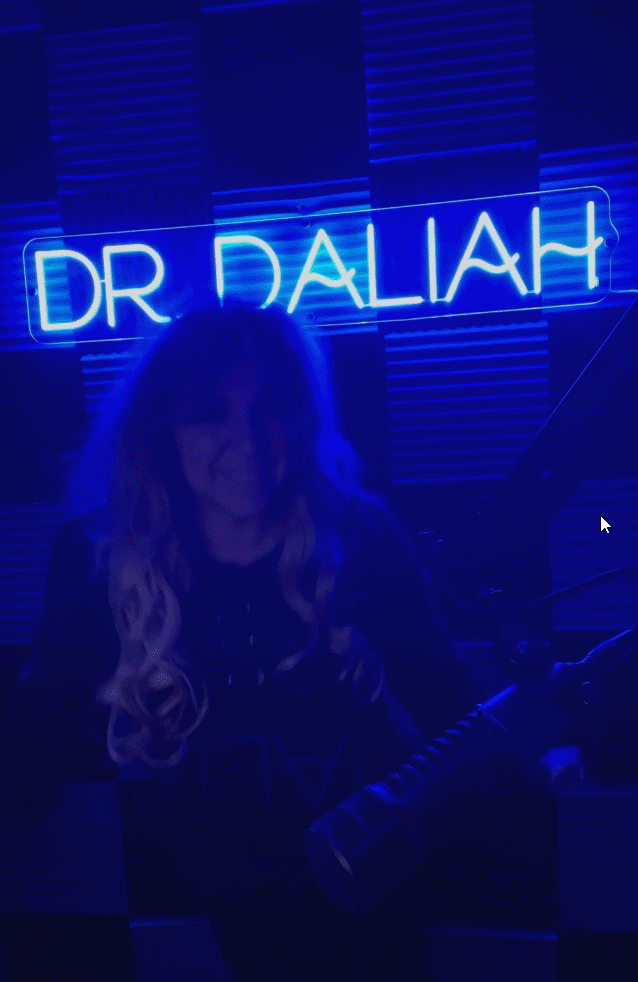 Music Group Gunhill Road Putting Final Touches on Talk Radio Anthem. Gunhill Road, the perennial pop music ensemble that has attracted hundreds of thousands of worldwide followers with its growing repertoire of issue-oriented songs and music videos, is currently in post-production with an anthem celebrating talk radio. Titled “Don’t Stop Talkin’” – the song is an uplifting and infectiously catchy tune about the vital role talk radio plays in serving the cause of American freedom of speech. With lines that include “As long as you’ve got a voice, don’t ever stop!” and “As long as you’ve got the truth, don’t ever stop!” the original composition co-written by band members Steve Goldrich, Paul Reisch, Brian Koonin, and Michael Harrison encourages talk radio practitioners to keep up the good work and great service they provide the nation.TALKERS Heavy Hundred syndicated host Dr. Daliah Wachs pictured above bopping to the music in a scene from the forthcoming video “Don’t Stop Talkin'” by Gunhill Road.
Music Group Gunhill Road Putting Final Touches on Talk Radio Anthem. Gunhill Road, the perennial pop music ensemble that has attracted hundreds of thousands of worldwide followers with its growing repertoire of issue-oriented songs and music videos, is currently in post-production with an anthem celebrating talk radio. Titled “Don’t Stop Talkin’” – the song is an uplifting and infectiously catchy tune about the vital role talk radio plays in serving the cause of American freedom of speech. With lines that include “As long as you’ve got a voice, don’t ever stop!” and “As long as you’ve got the truth, don’t ever stop!” the original composition co-written by band members Steve Goldrich, Paul Reisch, Brian Koonin, and Michael Harrison encourages talk radio practitioners to keep up the good work and great service they provide the nation.TALKERS Heavy Hundred syndicated host Dr. Daliah Wachs pictured above bopping to the music in a scene from the forthcoming video “Don’t Stop Talkin'” by Gunhill Road.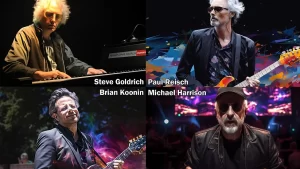
 This is an exceptional opportunity for an experienced professional to drive success in the country’s number one media market. The ideal candidate will have a deep understanding of the NYC media landscape and strong market relationships to drive business growth. Apply online at
This is an exceptional opportunity for an experienced professional to drive success in the country’s number one media market. The ideal candidate will have a deep understanding of the NYC media landscape and strong market relationships to drive business growth. Apply online at 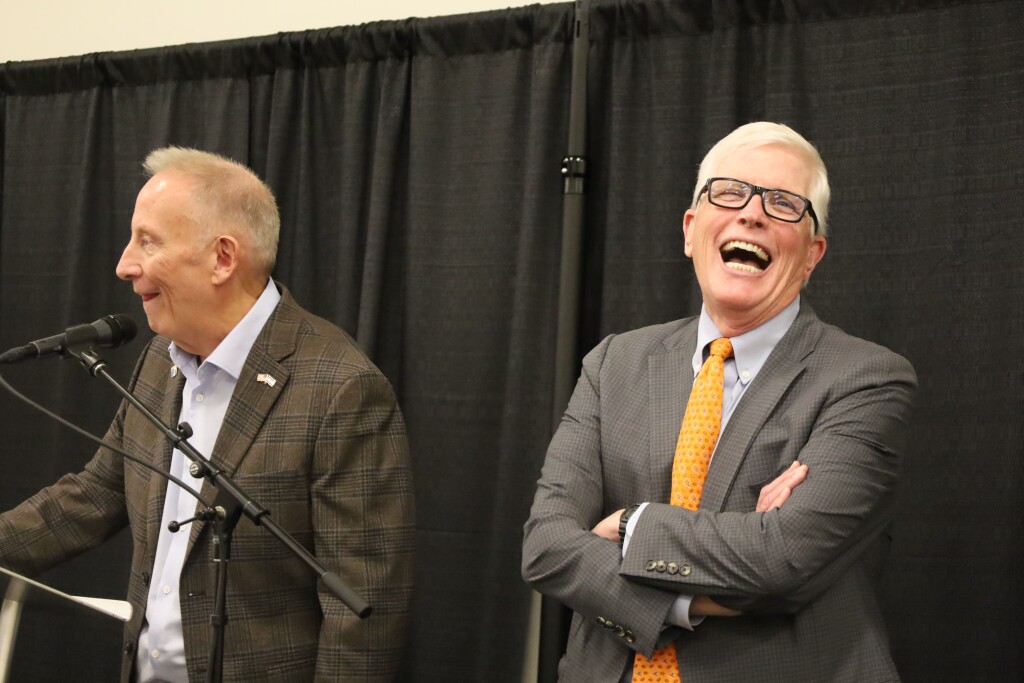
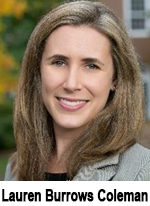 Longtime CFO Marie Tedesco will retire from Beasley after 33 years of what sources describe as “dedicated service to the company.” Before joining Beasley, Burrows Coleman served as Global Head of Strategic Corporate and Commercial Finance at Wayfair, where she led a global team of 50 across Financial Planning & Analysis, Commercial Finance, Capital Markets, Corporate Development, and Global Tax functions. Burrows Coleman’s career also includes leadership positions at WindSail Capital Group and Wind Point Partners, both private equity firms, as well as GE Capital, where she managed equity and debt investments across various industries. She began her career as an investment banker in the Communications & Media group at Lehman Brothers. “We are absolutely thrilled to welcome Lauren into the Beasley family,” said Caroline Beasley, CEO of Beasley Broadcast Group, Inc. “Her extensive and diverse experience, combined with her leadership skills, are exactly what we need to drive the company forward as we evolve into the future.” Burrows Coleman holds an MBA from Harvard Business School and an A.B. cum laude from Dartmouth College. Commenting on Marie Tedesco’s retirement, Beasley said, “Marie has been an integral part of our success, and her contributions have shaped the organization into what it is today,” adding, “It has been a privilege to work alongside her, and we are deeply grateful for her unwavering commitment, hard work, and leadership. We will greatly miss Marie’s wisdom and guidance, and we wish her nothing but the very best!”
Longtime CFO Marie Tedesco will retire from Beasley after 33 years of what sources describe as “dedicated service to the company.” Before joining Beasley, Burrows Coleman served as Global Head of Strategic Corporate and Commercial Finance at Wayfair, where she led a global team of 50 across Financial Planning & Analysis, Commercial Finance, Capital Markets, Corporate Development, and Global Tax functions. Burrows Coleman’s career also includes leadership positions at WindSail Capital Group and Wind Point Partners, both private equity firms, as well as GE Capital, where she managed equity and debt investments across various industries. She began her career as an investment banker in the Communications & Media group at Lehman Brothers. “We are absolutely thrilled to welcome Lauren into the Beasley family,” said Caroline Beasley, CEO of Beasley Broadcast Group, Inc. “Her extensive and diverse experience, combined with her leadership skills, are exactly what we need to drive the company forward as we evolve into the future.” Burrows Coleman holds an MBA from Harvard Business School and an A.B. cum laude from Dartmouth College. Commenting on Marie Tedesco’s retirement, Beasley said, “Marie has been an integral part of our success, and her contributions have shaped the organization into what it is today,” adding, “It has been a privilege to work alongside her, and we are deeply grateful for her unwavering commitment, hard work, and leadership. We will greatly miss Marie’s wisdom and guidance, and we wish her nothing but the very best!”
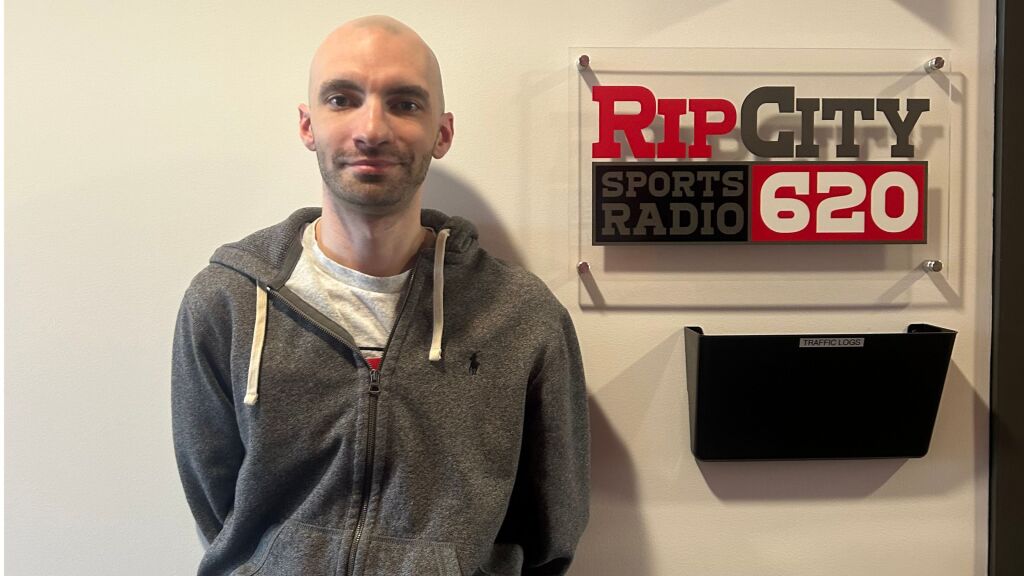 iHM Portand Adds Sean Highkin as Trail Blazers Correspondent on WPOJ-AM. iHeartMedia Portland’s Rip City Radio 620, “Your Home of the Portland Trail Blazers,” announced today (10/24) that acclaimed sports journalist Sean Highkin will join the station as the Portland Trail Blazers correspondent, effective immediately. He will provide comprehensive coverage of the games, practices, press conferences and everything revolving around the Portland Trail Blazers on their flagship station. Highkin brings over a decade of experience covering the NBA, including seven years dedicated to the Portland Trail Blazers. As a trusted voice in basketball, his experience includes contributing to national outlets such as Bleacher Report, USA Today, The Athletic and NBC Sports. In 2023, Highkin was named Oregon Sportswriter of the Year by the National Sports Media Association. “Sean’s knowledge, expertise and impressive track record will elevate and take our Trail Blazers coverage to the next level,” said Marshal Burgess, metro president of iHeartMedia Portland. “His insightful analysis and in-depth reporting have made him a respected voice in the sports journalism community, and we are thrilled to have him join the iHeartRadio Portland team.”
iHM Portand Adds Sean Highkin as Trail Blazers Correspondent on WPOJ-AM. iHeartMedia Portland’s Rip City Radio 620, “Your Home of the Portland Trail Blazers,” announced today (10/24) that acclaimed sports journalist Sean Highkin will join the station as the Portland Trail Blazers correspondent, effective immediately. He will provide comprehensive coverage of the games, practices, press conferences and everything revolving around the Portland Trail Blazers on their flagship station. Highkin brings over a decade of experience covering the NBA, including seven years dedicated to the Portland Trail Blazers. As a trusted voice in basketball, his experience includes contributing to national outlets such as Bleacher Report, USA Today, The Athletic and NBC Sports. In 2023, Highkin was named Oregon Sportswriter of the Year by the National Sports Media Association. “Sean’s knowledge, expertise and impressive track record will elevate and take our Trail Blazers coverage to the next level,” said Marshal Burgess, metro president of iHeartMedia Portland. “His insightful analysis and in-depth reporting have made him a respected voice in the sports journalism community, and we are thrilled to have him join the iHeartRadio Portland team.”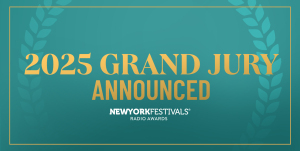 New York Festivals 2025 Radio Awards Announces Distinguished Grand Jury. The New York Festivals® Radio Awards has announced its 2025 Grand Jury. The 2025 Radio Awards Grand Jury features over 100 global leaders from the radio industry across six continents. This distinguished panel comprises world-class content creators, industry visionaries, and iconic voices. Recruited from renowned companies, these directors, producers, journalists, writers, and sound artists are celebrated for their innovation and engaging storytelling. “The robust world of audio storytelling today is fully represented in the 2025 edition of the Grand Jury,” said Rose Anderson, EVP/executive director, New York Festivals Radio Awards. “From audiobooks to podcasts, from investigative journalism to live events, and from mystery to social justice, this year’s jury members volunteer their time and lend their expertise.” The New York Festivals Radio Awards provides a platform to celebrate creative storytellers from around the world. For 67 years, NYF has recognized both innovation and exceptional quality in broadcast audio content across all genres and platforms since 1957. Since 2023, The National Press Club, has partnered with New York Festivals to honor the highest scoring news program across the Coverage Of Breaking News Story, Coverage Of Ongoing News Story, Nonfiction Series, Investigative Journalism Podcast, and News Podcast categories. The winner will be announced during the 2025 Storytellers Gala in April. NYF’s Radio Awards receives entries from radio stations, networks, and independent producers from over 30 countries around the globe. The mission of the competition is to honor the achievements of the men and women who make up the global audio storytelling community. To see complete list of Grand Jurors click here
New York Festivals 2025 Radio Awards Announces Distinguished Grand Jury. The New York Festivals® Radio Awards has announced its 2025 Grand Jury. The 2025 Radio Awards Grand Jury features over 100 global leaders from the radio industry across six continents. This distinguished panel comprises world-class content creators, industry visionaries, and iconic voices. Recruited from renowned companies, these directors, producers, journalists, writers, and sound artists are celebrated for their innovation and engaging storytelling. “The robust world of audio storytelling today is fully represented in the 2025 edition of the Grand Jury,” said Rose Anderson, EVP/executive director, New York Festivals Radio Awards. “From audiobooks to podcasts, from investigative journalism to live events, and from mystery to social justice, this year’s jury members volunteer their time and lend their expertise.” The New York Festivals Radio Awards provides a platform to celebrate creative storytellers from around the world. For 67 years, NYF has recognized both innovation and exceptional quality in broadcast audio content across all genres and platforms since 1957. Since 2023, The National Press Club, has partnered with New York Festivals to honor the highest scoring news program across the Coverage Of Breaking News Story, Coverage Of Ongoing News Story, Nonfiction Series, Investigative Journalism Podcast, and News Podcast categories. The winner will be announced during the 2025 Storytellers Gala in April. NYF’s Radio Awards receives entries from radio stations, networks, and independent producers from over 30 countries around the globe. The mission of the competition is to honor the achievements of the men and women who make up the global audio storytelling community. To see complete list of Grand Jurors click here  more recognition as a (legacy) medium that’s constantly innovating and evolving to enhance the consumer experience and the advertiser opportunity. At the heart of Audio lives great storytelling. From the beginning of humankind to today’s best advertising, storytelling is the single most effective tool for sharing information and knowledge – all while entertaining, educating and yes, selling. Storytelling is a constant, but the way stories are told is shifting, driven by new technologies and approaches that allow brands to create more emotional connection, deliver more personalized experiences and scale their campaigns for maximum impact. And no medium is better equipped to do this than audio.”
more recognition as a (legacy) medium that’s constantly innovating and evolving to enhance the consumer experience and the advertiser opportunity. At the heart of Audio lives great storytelling. From the beginning of humankind to today’s best advertising, storytelling is the single most effective tool for sharing information and knowledge – all while entertaining, educating and yes, selling. Storytelling is a constant, but the way stories are told is shifting, driven by new technologies and approaches that allow brands to create more emotional connection, deliver more personalized experiences and scale their campaigns for maximum impact. And no medium is better equipped to do this than audio.” 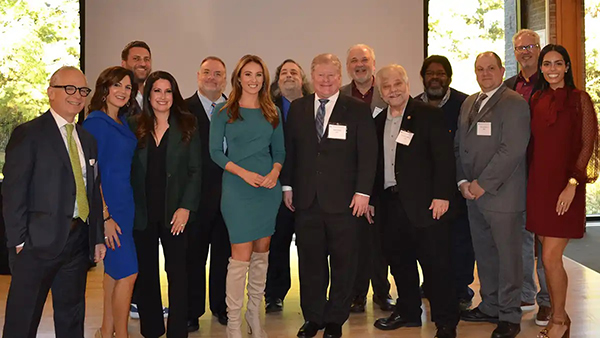
 this year’s Benztown 50 is the presentation of the voiceover industry’s highest honor, the Chris Corley Lifetime Achievement Award, to Ann DeWig. Benztown president Dave “Chachi” Denes says, “We are thrilled to recognize the top 50 VO artists in the U.S. and Canada for 2024, along with the peer-voted ‘Best of Format’ honorees and the great Ann DeWig, recipient of the Chris Corley Lifetime Achievement Award. These individuals represent the pinnacle of audio branding and are synonymous with many major brands in our industry. Fifteen years ago, when we began working with VO talent, I never imagined we would collaborate with the best in North America. I am incredibly grateful for their support; without it, Benztown would not be where it is today. As we celebrate these honorees, we also honor all world-class VO talent and the emerging voices that shape the future of the industry.”
this year’s Benztown 50 is the presentation of the voiceover industry’s highest honor, the Chris Corley Lifetime Achievement Award, to Ann DeWig. Benztown president Dave “Chachi” Denes says, “We are thrilled to recognize the top 50 VO artists in the U.S. and Canada for 2024, along with the peer-voted ‘Best of Format’ honorees and the great Ann DeWig, recipient of the Chris Corley Lifetime Achievement Award. These individuals represent the pinnacle of audio branding and are synonymous with many major brands in our industry. Fifteen years ago, when we began working with VO talent, I never imagined we would collaborate with the best in North America. I am incredibly grateful for their support; without it, Benztown would not be where it is today. As we celebrate these honorees, we also honor all world-class VO talent and the emerging voices that shape the future of the industry.” 
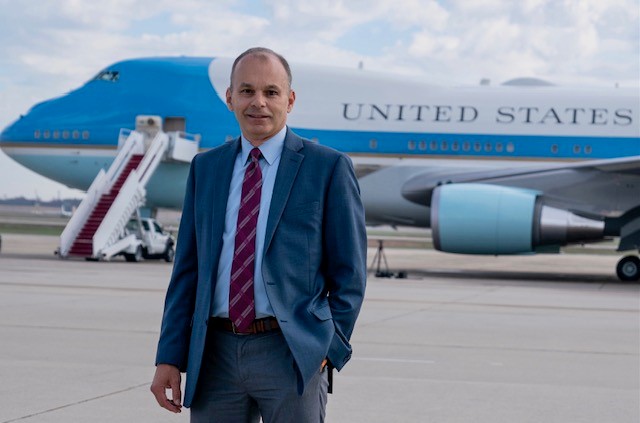
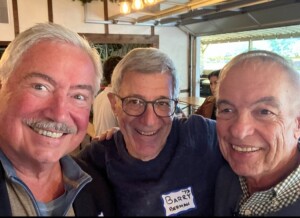 Old Friends and Colleagues Gather for CRN International Reunion. Some 50 long-ago colleagues gathered at a warm weekend reunion at a cozy restaurant in the Nutmeg State for what, in the 1970s, began as “Connecticut Radio Network.” It evolved into CRN International, a major advertising promotion agency, which ceased operations a decade ago. CRN SkiWatch reports aired across the USA, customized for each affiliate, and based on conditions reported by CRN’s army of spotters. Pictured above (l-r): consultant Holland Cooke; CRN International founder Barry Berman; and WABC, New York news personality, Joe Connolly. (NOTE: CRN International is not to be confused with long-active CRN Digital Talk Radio.)
Old Friends and Colleagues Gather for CRN International Reunion. Some 50 long-ago colleagues gathered at a warm weekend reunion at a cozy restaurant in the Nutmeg State for what, in the 1970s, began as “Connecticut Radio Network.” It evolved into CRN International, a major advertising promotion agency, which ceased operations a decade ago. CRN SkiWatch reports aired across the USA, customized for each affiliate, and based on conditions reported by CRN’s army of spotters. Pictured above (l-r): consultant Holland Cooke; CRN International founder Barry Berman; and WABC, New York news personality, Joe Connolly. (NOTE: CRN International is not to be confused with long-active CRN Digital Talk Radio.) AdLarge Adds Innovative “CIRCLE THIS” Podcast to Client Stable. AdLarge, a pioneering podcast advertising agency, has announces the addition of “CIRCLE THIS with Andrea ‘Dre’ Bendewald” to the
AdLarge Adds Innovative “CIRCLE THIS” Podcast to Client Stable. AdLarge, a pioneering podcast advertising agency, has announces the addition of “CIRCLE THIS with Andrea ‘Dre’ Bendewald” to the  If a shark doesn’t swim, it dies. Radio is just fine, thank you, but it’s not swimming. Water, check. Tank, check, Sharks, check. Swimming to the next meal, nope. For the past 10 years at least, the radio show in every city is stuck in place and that sound in the distance that wakes you up at night is a death rattle.
If a shark doesn’t swim, it dies. Radio is just fine, thank you, but it’s not swimming. Water, check. Tank, check, Sharks, check. Swimming to the next meal, nope. For the past 10 years at least, the radio show in every city is stuck in place and that sound in the distance that wakes you up at night is a death rattle. The research notes millennials (ages 27-42) are the most concerned at 83%. The survey finds people are feeling the effects of the higher costs of goods and services, and they remain concerned about inflation. In addition, 37% said their finances are in worse shape than four years ago. Thirty-four percent said their finances are about the same, while only 29% said they’re better off than they were four years ago. The research indicates more than half (52%) of Americans believe the U.S. presidency has a major impact on their personal finances. “We encourage every American to go out and vote,” said Dave Ramsey, personal finance expert and host of “The Ramsey Show.” “But remember, what goes on in your house is a whole lot more important than who’s in the White House. The research shows that less than half of Americans believe a written household budget is the way to win with money. That has to change, or nothing will.”
The research notes millennials (ages 27-42) are the most concerned at 83%. The survey finds people are feeling the effects of the higher costs of goods and services, and they remain concerned about inflation. In addition, 37% said their finances are in worse shape than four years ago. Thirty-four percent said their finances are about the same, while only 29% said they’re better off than they were four years ago. The research indicates more than half (52%) of Americans believe the U.S. presidency has a major impact on their personal finances. “We encourage every American to go out and vote,” said Dave Ramsey, personal finance expert and host of “The Ramsey Show.” “But remember, what goes on in your house is a whole lot more important than who’s in the White House. The research shows that less than half of Americans believe a written household budget is the way to win with money. That has to change, or nothing will.”